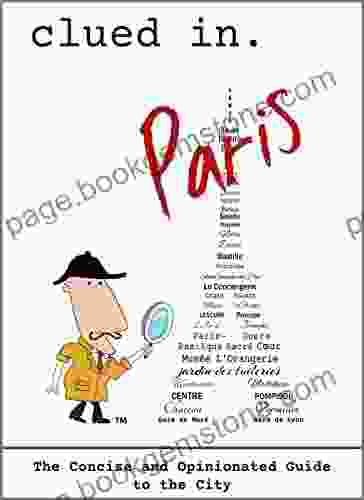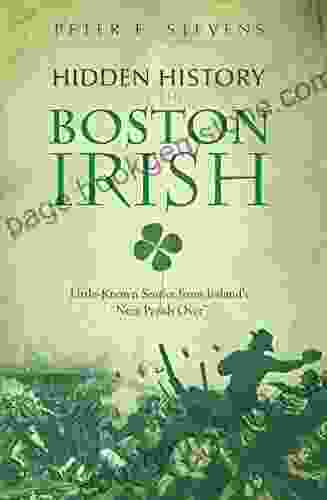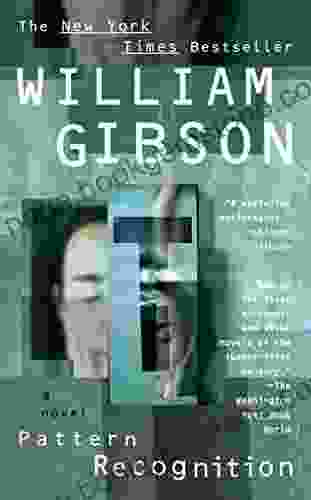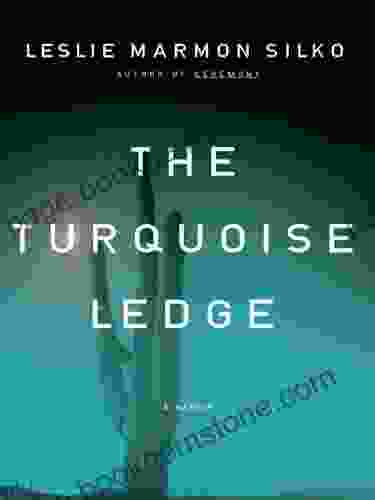Pattern Recognition Blue Ant: A Comprehensive Guide

In the vast and diverse world of ants, the Pattern Recognition Blue Ant (Camponotus perthensis) stands out as a remarkable creature. Known for its exceptional cognitive abilities and complex social structure, this ant has captured the attention of scientists and nature enthusiasts alike.
4.4 out of 5
| Language | : | English |
| File size | : | 1503 KB |
| Text-to-Speech | : | Enabled |
| Screen Reader | : | Supported |
| Enhanced typesetting | : | Enabled |
| Word Wise | : | Enabled |
| Print length | : | 368 pages |
This comprehensive guide will delve into the fascinating world of Pattern Recognition Blue Ants, exploring their unique characteristics, social dynamics, communication methods, and the latest research on their cognitive capabilities. Through detailed descriptions and engaging examples, we will uncover the intricate details of these extraordinary insects.
Taxonomy and Distribution
Pattern Recognition Blue Ants belong to the genus Camponotus, a widespread group of ants found throughout the world. They are native to Australia and can be found in a variety of habitats, including forests, grasslands, and urban areas. These ants are characterized by their distinctive blue coloration, which serves as a warning to potential predators.
Physical Characteristics
Pattern Recognition Blue Ants are relatively large ants, with workers typically measuring around 5-8 mm in length. They have a robust body with a large head and strong mandibles. Their antennae are long and slender, allowing them to detect chemical cues and communicate with nestmates.
As mentioned earlier, Blue Ants possess a striking blue coloration, which is caused by the presence of a pigment called ommochrome in their exoskeleton. This coloration serves as an aposematic signal, warning predators that they are unpalatable.
Social Structure and Communication
Pattern Recognition Blue Ants live in highly organized colonies with a complex social structure. Each colony typically consists of a single queen, numerous workers, and a smaller number of males. The queen is responsible for laying eggs and maintaining the colony, while the workers perform a variety of tasks, such as foraging for food, caring for the young, and defending the nest.
Communication among Blue Ants is crucial for coordinating their activities and maintaining the integrity of the colony. They use a variety of methods to communicate, including chemical cues, sound signals, and tactile gestures. Chemical cues, in the form of pheromones, are used to mark trails, signal danger, and identify nestmates.
Sound signals are another important form of communication for Blue Ants. They produce a range of sounds, including squeaks, chirps, and clicks, which they use to communicate with each other over short distances. Tactile gestures, such as antennal tapping and grooming, are also used to convey information between nestmates.
Problem-Solving and Cognitive Abilities
One of the most remarkable aspects of Pattern Recognition Blue Ants is their exceptional problem-solving abilities. They have demonstrated a high level of cognitive flexibility and can adapt their behavior to changing environmental conditions.
For instance, researchers have observed Blue Ants using tools to overcome obstacles. In one study, ants were presented with a barrier blocking their access to food. The ants were able to use small pebbles to wedge open the barrier and reach the food source.
Blue Ants also exhibit advanced navigational abilities. They use a combination of visual cues and path integration to locate their nest and forage for food. They can remember landmarks and create cognitive maps of their surroundings, allowing them to navigate efficiently even in complex environments.
Adaptive Behaviors
Pattern Recognition Blue Ants have evolved a range of adaptive behaviors that enable them to survive and thrive in their environment. One such behavior is their ability to form symbiotic relationships with other organisms.
Blue Ants are known to form mutualistic relationships with certain species of acacia trees. The ants protect the trees from herbivores, while the trees provide the ants with food and shelter in the form of hollow thorns.
Another adaptive behavior exhibited by Blue Ants is their ability to regulate their body temperature. They achieve this through a process of behavioral thermoregulation, where they adjust their activity levels and seek out warmer or cooler areas to maintain an optimal body temperature.
Research and Applications
Due to their remarkable cognitive abilities, Pattern Recognition Blue Ants have become a subject of extensive research in the fields of entomology, cognitive science, and artificial intelligence.
Researchers are exploring the underlying mechanisms of their problem-solving skills, communication methods, and navigational abilities. This research has the potential to inform the development of new technologies and algorithms inspired by ant intelligence.
In addition, the adaptive behaviors of Blue Ants have inspired biomimicry applications. For instance, the way ants regulate their body temperature has led to the development of new cooling technologies for buildings and electronic devices.
Pattern Recognition Blue Ants are truly remarkable creatures that embody the wonders of the natural world. Their complex social structure, advanced communication methods, and exceptional problem-solving abilities have made them a subject of fascination for both scientists and nature enthusiasts.
As research continues to uncover the intricate details of their behavior, we gain a deeper appreciation for the diversity and intelligence of the ant world. The Pattern Recognition Blue Ant serves as a testament to the remarkable capabilities that can evolve within the insect kingdom.
References
- Hölldobler, B., & Wilson, E. O. (1990). The Ants. Harvard University Press.
- Franks, N. R., & Richardson, T. (2006). Swarm Intelligence: From Natural to Artificial Systems. Oxford University Press.
- Wang, Z., & Li, Y. (2018). Problem-solving abilities of ants: A review. Frontiers in Zoology, 15(1),1-12.
- Grob, C., Bonhoeffer, T., & Wittlinger, M. (2014). The navigational toolkit of ants. Nature Reviews Neuroscience, 15(11),692-702.
- Klimes, P., & Janda, M. (2019). Symbiotic relationships between ants and plants. Current Opinion in Insect Science, 35, 43-49.
4.4 out of 5
| Language | : | English |
| File size | : | 1503 KB |
| Text-to-Speech | : | Enabled |
| Screen Reader | : | Supported |
| Enhanced typesetting | : | Enabled |
| Word Wise | : | Enabled |
| Print length | : | 368 pages |
Do you want to contribute by writing guest posts on this blog?
Please contact us and send us a resume of previous articles that you have written.
 Best Book
Best Book Page Flip
Page Flip Bookshelf
Bookshelf Literary loom
Literary loom Chapter
Chapter Bookish
Bookish PageTurner
PageTurner Bibliophile
Bibliophile Story
Story Inkwell
Inkwell Bookworm
Bookworm Labyrinth
Labyrinth Plot Twist
Plot Twist Prose
Prose Paperback
Paperback Storyteller
Storyteller Sanctuary
Sanctuary Fiction
Fiction Reading
Reading Chronicle
Chronicle Read
Read Nana Kwame Adjei Brenyah
Nana Kwame Adjei Brenyah Joshua Dalzelle
Joshua Dalzelle Lauren Francis Sharma
Lauren Francis Sharma Susan Cross
Susan Cross Janet Carlson
Janet Carlson Ryan Leslie
Ryan Leslie Stefan Kottwitz
Stefan Kottwitz Karin Evans
Karin Evans Henry Hemming
Henry Hemming Judy Friesem
Judy Friesem Thefirstdefier
Thefirstdefier Ava Archer
Ava Archer Marisa Renee Lee
Marisa Renee Lee Jim Hutchinson
Jim Hutchinson Samantha Irby
Samantha Irby R Brady Frost
R Brady Frost Fran Macilvey
Fran Macilvey Jeff Rovin
Jeff Rovin Jonathan Dehart
Jonathan Dehart Phillip Barlag
Phillip Barlag Patrick Dimarchi
Patrick Dimarchi Camilla Townsend
Camilla Townsend Paul Gauguin
Paul Gauguin Iain Rob Wright
Iain Rob Wright Yvonne Moore
Yvonne Moore Kevin Hart
Kevin Hart Keith Fenwick
Keith Fenwick Steve Charney
Steve Charney Nobuko Miyamoto
Nobuko Miyamoto Margaret Hermes
Margaret Hermes Yuta Aoki
Yuta Aoki Charles E Gannon
Charles E Gannon Patti Mollica
Patti Mollica Jeneane Lunn
Jeneane Lunn Jason Kander
Jason Kander John Tateishi
John Tateishi Jeremy Black
Jeremy Black Lisa Edwards
Lisa Edwards Tom Glover
Tom Glover Zogarth
Zogarth Jeffrey B Perry
Jeffrey B Perry Laura Slater
Laura Slater Lauren Bastide
Lauren Bastide J D Sullivan
J D Sullivan John R Kemp
John R Kemp William Gibson
William Gibson Paul Carter
Paul Carter Jon Steel
Jon Steel Matt Zoller Seitz
Matt Zoller Seitz Manoah Bowman
Manoah Bowman Zack Meisel
Zack Meisel Sylvia Townsend Warner
Sylvia Townsend Warner Maria Adolfsson
Maria Adolfsson Stephanie Nicole Norris
Stephanie Nicole Norris Philip Gwynne Jones
Philip Gwynne Jones Tyanna
Tyanna Insight Guides
Insight Guides Katherine Arden
Katherine Arden Helena Reckitt
Helena Reckitt Jason Fry
Jason Fry Bruce Hanington
Bruce Hanington Bruce Cook
Bruce Cook Hillary S Webb
Hillary S Webb James Hunter
James Hunter James E Seaver
James E Seaver D K Holmberg
D K Holmberg Joe Haldeman
Joe Haldeman Tina Turner
Tina Turner Michael Moorcock
Michael Moorcock Kai Kupferschmidt
Kai Kupferschmidt Katharine Branning
Katharine Branning Kevin Ikenberry
Kevin Ikenberry Washington Irving
Washington Irving Meredith Talusan
Meredith Talusan Jaime Lowe
Jaime Lowe Michelle Rial
Michelle Rial Walter Mosley
Walter Mosley Bob Wilbanks
Bob Wilbanks J R Ward
J R Ward J D Robb
J D Robb Tiffany Haddish
Tiffany Haddish Jacquie Abram
Jacquie Abram Philip Gourevitch
Philip Gourevitch Phil Chan
Phil Chan Sally R Ball
Sally R Ball Larry Loftis
Larry Loftis Joyce Yee
Joyce Yee Richard Lecocq
Richard Lecocq Morris Rossabi
Morris Rossabi Steve Hulett
Steve Hulett Roy John
Roy John Kathryn Warner
Kathryn Warner Paul Bonnet
Paul Bonnet Mary Jordan
Mary Jordan Karen Stocker
Karen Stocker Larry Niven
Larry Niven Bonny Snowdon
Bonny Snowdon Tim Testu
Tim Testu Rani St Pucchi
Rani St Pucchi John Man
John Man Victoria Lewis
Victoria Lewis Jean Muenchrath
Jean Muenchrath Natalie Livingstone
Natalie Livingstone Jacquelyn Descanso
Jacquelyn Descanso Jan Cohen Cruz
Jan Cohen Cruz Jack Hitt
Jack Hitt Nelson George
Nelson George Lally Brown
Lally Brown Katrina Rodabaugh
Katrina Rodabaugh Eric Vall
Eric Vall Jean Hugard
Jean Hugard Jeff Hobbs
Jeff Hobbs Thomas Lamosse
Thomas Lamosse Neal Stephenson
Neal Stephenson Brian Trent
Brian Trent Kiyoshi Takahashi
Kiyoshi Takahashi Ilana Kurshan
Ilana Kurshan Wayne J Lutz
Wayne J Lutz M D Cooper
M D Cooper Marjorie Agosin
Marjorie Agosin Steve Stevenson
Steve Stevenson Joscha Remus
Joscha Remus Susie Hodge
Susie Hodge Ishmael Beah
Ishmael Beah Johno Ellison
Johno Ellison Baby Professor
Baby Professor Misty Copeland
Misty Copeland Robert Mccammon
Robert Mccammon Jay Brian Schoonmaker
Jay Brian Schoonmaker James Graham Baker
James Graham Baker Marilyn Laura Bowman
Marilyn Laura Bowman Kevin Budelmann
Kevin Budelmann E M Hardy
E M Hardy Vicky Gray
Vicky Gray Nat Segnit
Nat Segnit Kate Rawles
Kate Rawles Justin Sloan
Justin Sloan Honey Phillips
Honey Phillips Jessica Alba
Jessica Alba James Barrington
James Barrington Mira Schor
Mira Schor Kat Varano
Kat Varano Ivy Mix
Ivy Mix Marcus Samuelsson
Marcus Samuelsson Supersummary
Supersummary Kay Doherty Bennett
Kay Doherty Bennett Jennifer L Scott
Jennifer L Scott Monica Byrne
Monica Byrne Ramie Targoff
Ramie Targoff Sam Pivnik
Sam Pivnik Irene Latham
Irene Latham Melissa Maerz
Melissa Maerz Jason L Riley
Jason L Riley Paul Arthur Berkman
Paul Arthur Berkman Merry White
Merry White Lisa Kleypas
Lisa Kleypas Kimberly Wilkes
Kimberly Wilkes Jesmyn Ward
Jesmyn Ward Ariel Sabar
Ariel Sabar Thomas J Campanella
Thomas J Campanella Lonely Planet
Lonely Planet Tom Segev
Tom Segev Ian Littlewood
Ian Littlewood Michael Peter Bolus
Michael Peter Bolus Steph The Hammer Hammerman
Steph The Hammer Hammerman Sheila Simkin
Sheila Simkin Hiroko Yoda
Hiroko Yoda James Swallow
James Swallow Jan Wahl
Jan Wahl Jana K Lipman
Jana K Lipman Michael Roberts
Michael Roberts Steve Parker
Steve Parker Ruth Behar
Ruth Behar C J Cherryh
C J Cherryh Martin Gilbert
Martin Gilbert Tarry Lindquist
Tarry Lindquist Kindle Edition
Kindle Edition James Lawson
James Lawson Deborah Frisch
Deborah Frisch Lina Acevedo
Lina Acevedo Vaneetha Risner
Vaneetha Risner Martha Maccallum
Martha Maccallum Taylor Moore
Taylor Moore Patti M Hall
Patti M Hall Steve Berry
Steve Berry Tim Jeal
Tim Jeal Kia Jones
Kia Jones Konchog Lhadrepa
Konchog Lhadrepa Brandon Taylor
Brandon Taylor James Patterson
James Patterson Jeff Vandermeer
Jeff Vandermeer Kate Flint
Kate Flint Jason Waguespack
Jason Waguespack Languages World
Languages World Traci Bunkers
Traci Bunkers Plutarch
Plutarch Stef Smulders
Stef Smulders Ted Chiang
Ted Chiang Steven W Brallier
Steven W Brallier Maeve Binchy
Maeve Binchy Kent Blansett
Kent Blansett Pat Kramer
Pat Kramer Nancy Ditomaso
Nancy Ditomaso Russell Smith
Russell Smith John Pike
John Pike John Clifford
John Clifford Jeanine Cornillot
Jeanine Cornillot Pierre Pochet
Pierre Pochet Peter Parr
Peter Parr Theo Farrington
Theo Farrington James J Downes
James J Downes T O Smith
T O Smith Victoria Charles
Victoria Charles Robyn Carr
Robyn Carr Jeff Mellem
Jeff Mellem Christina Sharpe
Christina Sharpe Marjorie R Williams
Marjorie R Williams Steven Konkoly
Steven Konkoly Steve Kaffen
Steve Kaffen Ping Fu
Ping Fu S J A Turney
S J A Turney Tanya Tagaq
Tanya Tagaq Nancy Marie Mithlo
Nancy Marie Mithlo James Anthony
James Anthony Joe Fig
Joe Fig Tom Santopietro
Tom Santopietro Richard Blanco
Richard Blanco Kaoru Nonomura
Kaoru Nonomura Jack Campbell
Jack Campbell Sean Wallace
Sean Wallace Roger Ebert
Roger Ebert Jami Gigot
Jami Gigot Zia Knight
Zia Knight J Nichole
J Nichole Shi Davidi
Shi Davidi Michael Kluckner
Michael Kluckner Laxuri Art
Laxuri Art Vikki Haffenden
Vikki Haffenden Janet Adler
Janet Adler Jo Goodman
Jo Goodman Italo Calvino
Italo Calvino Ron Collins
Ron Collins John Szpunar
John Szpunar John Potvin
John Potvin Jerry Vermilye
Jerry Vermilye V F Gutierrez
V F Gutierrez Mike Brooks
Mike Brooks Jason Cochran
Jason Cochran Suzanne Brooker
Suzanne Brooker Ruth Superhal
Ruth Superhal Marty Sklar
Marty Sklar Mauricio Savarese
Mauricio Savarese Leslie Marmon Silko
Leslie Marmon Silko W Kamau Bell
W Kamau Bell Interweave Editors
Interweave Editors Mary Anne Dorward
Mary Anne Dorward Joy Avery
Joy Avery David Menconi
David Menconi Julia Zarankin
Julia Zarankin Kristal Wick
Kristal Wick K C Mills
K C Mills Stephen Hunter
Stephen Hunter John Kane
John Kane Lisa Wixon
Lisa Wixon Tom Swimm
Tom Swimm Pete Salgado
Pete Salgado Isabel Wroth
Isabel Wroth Jansen Art Studio
Jansen Art Studio Peter F Stevens
Peter F Stevens Paula M Block
Paula M Block Ben Shahn
Ben Shahn Kira Salak
Kira Salak Lorna Jane Harvey
Lorna Jane Harvey Todd Wassel
Todd Wassel Harold Speed
Harold Speed P J Thorndyke
P J Thorndyke Stephen Smith
Stephen Smith Marian Lindberg
Marian Lindberg Laureen Nussbaum
Laureen Nussbaum Northrop Davis
Northrop Davis Iris Bolling
Iris Bolling Chris Kennedy
Chris Kennedy John Hindmarsh
John Hindmarsh Mary Taylor Simeti
Mary Taylor Simeti Martina M Lanier
Martina M Lanier Dr Lucie Rivera
Dr Lucie Rivera Jane Goodall
Jane Goodall Nora Ephron
Nora Ephron Mary Heron Dyer
Mary Heron Dyer Dean Dalton
Dean Dalton Tom Dunkel
Tom Dunkel J Nell
J Nell Julia Rothman
Julia Rothman Manny Serrato
Manny Serrato James H Cobb
James H Cobb Jonathan Jones
Jonathan Jones E H Raskin
E H Raskin Megan Mackie
Megan Mackie Mary Turzillo
Mary Turzillo Loet Velmans
Loet Velmans Jeff Howard
Jeff Howard Keith Osborn
Keith Osborn J A Hinds
J A Hinds Stephen T Moskey
Stephen T Moskey Reymundo Sanchez
Reymundo Sanchez Shirish Deshpande
Shirish Deshpande Louis L Amour
Louis L Amour James Monaco
James Monaco Arthur Miller
Arthur Miller P Scott Cunningham
P Scott Cunningham Ryan Jennings
Ryan Jennings Volta Voloshin Smith
Volta Voloshin Smith Jason Kingsley
Jason Kingsley Jazz E
Jazz E Jim Forest
Jim Forest Jean M Roberts
Jean M Roberts Butch Hartman
Butch Hartman Kris Schnee
Kris Schnee Roy Liebman
Roy Liebman Alec Potrero
Alec Potrero Lawrence Durrell
Lawrence Durrell Rick Scott
Rick Scott Melanie Clarke
Melanie Clarke Julia Fowler
Julia Fowler Lali Duperti
Lali Duperti Jose Vadi
Jose Vadi Niqua Nakell
Niqua Nakell Zuri Day
Zuri Day Jeanne St James
Jeanne St James Tade Thompson
Tade Thompson Kyle Anthony
Kyle Anthony Stephen Orr
Stephen Orr Laurie Tom
Laurie Tom Kandra Churchwell
Kandra Churchwell Veronica Li
Veronica Li Amanda Arneill
Amanda Arneill Maitland Mcdonagh
Maitland Mcdonagh Linda Lael Miller
Linda Lael Miller Ian Condry
Ian Condry J Foord
J Foord Jim Mccarthy
Jim Mccarthy Vincent Miller
Vincent Miller Jessica Shorstein
Jessica Shorstein Mel Dau
Mel Dau David Lynch
David Lynch Lizzie Damilola Blackburn
Lizzie Damilola Blackburn Hattie Gossett
Hattie Gossett Roxanne Modafferi
Roxanne Modafferi Patrick Dennis
Patrick Dennis Steve Spill
Steve Spill Quentin Tarantino
Quentin Tarantino Viet Thanh Nguyen
Viet Thanh Nguyen Michael Curtis
Michael Curtis Stuart Woods
Stuart Woods Mark Rothko
Mark Rothko Jacqueline Winspear
Jacqueline Winspear Juliette Aristides
Juliette Aristides Jack London
Jack London Jimmy O Yang
Jimmy O Yang Joe Posnanski
Joe Posnanski Susan Zwerman
Susan Zwerman J T Nicholas
J T Nicholas Renae Anderson
Renae Anderson Joe Garcia
Joe Garcia Hilary Bradt
Hilary Bradt Jasmine Tritten Llc
Jasmine Tritten Llc Danielle Joseph
Danielle Joseph Sarah Jackson
Sarah Jackson Judy Gay Matthews
Judy Gay Matthews Slim Randles
Slim Randles Patricia Sands
Patricia Sands Ross Buzzell
Ross Buzzell David Railton
David Railton Justin M Monehen
Justin M Monehen Obaidur Rahaman
Obaidur Rahaman Tanav Patkar
Tanav Patkar Kaitlyn Dornbier
Kaitlyn Dornbier Nicholas Sammond
Nicholas Sammond R G Richardson
R G Richardson Tessa Fontaine
Tessa Fontaine Darby Penney
Darby Penney Norman Eisen
Norman Eisen James Grant
James Grant Marcello Di Cintio
Marcello Di Cintio John Wilkinson
John Wilkinson William Gray
William Gray Tricia Cornell
Tricia Cornell James Hall
James Hall Kenneth French
Kenneth French John Preston
John Preston John Berger
John Berger Elinor Lipman
Elinor Lipman Edoardo Albert
Edoardo Albert Regine Abel
Regine Abel Tasha Black
Tasha Black Terrance Zepke
Terrance Zepke Brad Goreski
Brad Goreski Sandra M Z Armstrong
Sandra M Z Armstrong Yvonne Claypole
Yvonne Claypole Jennifer Lynne Matthews Fairbanks
Jennifer Lynne Matthews Fairbanks Tim Fisher
Tim Fisher Jasper T Scott
Jasper T Scott Robin Hobb
Robin Hobb K Webster
K Webster Rolf Giesen
Rolf Giesen Will Castro
Will Castro Michael Head
Michael Head Vaughn Patillo
Vaughn Patillo Mike Downs
Mike Downs Sanford Meisner
Sanford Meisner Scott Pratt
Scott Pratt Nolan Clark
Nolan Clark Henry Fraser
Henry Fraser Jack C Ramsay
Jack C Ramsay Hourly History
Hourly History Isaac Asimov
Isaac Asimov Mary Antin
Mary Antin Tom Bancroft
Tom Bancroft Peter Watts
Peter Watts Sherelle Green
Sherelle Green John Joseph Adams
John Joseph Adams Howard W French
Howard W French Shirtaloon
Shirtaloon Ronald Bergan
Ronald Bergan Joan Mellen
Joan Mellen Motorcycle Vagabonds
Motorcycle Vagabonds Kim Dana Kupperman
Kim Dana Kupperman Susan Kesler Simpson
Susan Kesler Simpson William Reyland
William Reyland Mariam V Lawal
Mariam V Lawal Ida B Wells
Ida B Wells Luis J Rodriguez
Luis J Rodriguez John Scotney
John Scotney Sarah Vowell
Sarah Vowell Ja Huss
Ja Huss Michael Harkins
Michael Harkins Mitchell Albala
Mitchell Albala Una Mccormack
Una Mccormack Carlyn Beccia
Carlyn Beccia Ulrike Fuchs
Ulrike Fuchs Robert C Wood
Robert C Wood Kathryn Stockett
Kathryn Stockett Laylah Roberts
Laylah Roberts Kresley Cole
Kresley Cole Rosie Rivera
Rosie Rivera Mark Willenbrink
Mark Willenbrink Matthew Israel
Matthew Israel Melissa Fehr
Melissa Fehr Ian Blakemore
Ian Blakemore Eva Van Loon
Eva Van Loon Bianca Del Rio
Bianca Del Rio Julian Curry
Julian Curry John Lawson
John Lawson Sianne Ngai
Sianne Ngai Rudolf Koch
Rudolf Koch Travis Rieder
Travis Rieder Dorit Elisha
Dorit Elisha Zanna Goldhawk
Zanna Goldhawk Shawn Levy
Shawn Levy Jeff Shaara
Jeff Shaara Roger Zelazny
Roger Zelazny Jonas Peters
Jonas Peters Weston Ochse
Weston Ochse Roland Kelts
Roland Kelts Joshua Glenn
Joshua Glenn Martin Ursell
Martin Ursell James Joseph
James Joseph Ramez Naam
Ramez Naam Michael Hone
Michael Hone James Halliday
James Halliday Karen Homer
Karen Homer Jonathan Drori
Jonathan Drori Vera Nazarian
Vera Nazarian Shea Ernshaw
Shea Ernshaw Marion Zimmer Bradley
Marion Zimmer Bradley Jessica Gadziala
Jessica Gadziala Ryan Dunlavey
Ryan Dunlavey Suhas Mantri
Suhas Mantri Ran Walker
Ran Walker James Baldwin
James Baldwin M William Phelps
M William Phelps David Sherwin
David Sherwin Kristen Faber
Kristen Faber James Claflin
James Claflin Thomas Weisser
Thomas Weisser J J Mcavoy
J J Mcavoy Willie Mays
Willie Mays Michael Dooley
Michael Dooley Johanna Lindsey
Johanna Lindsey Laura Beth Love
Laura Beth Love Slim Dusty
Slim Dusty Karen Attman
Karen Attman John Guy
John Guy Kim Fairley
Kim Fairley Henry David Thoreau
Henry David Thoreau James R Rush
James R Rush Sarah Simon
Sarah Simon E C Godhand
E C Godhand Jean Paul Labourdette
Jean Paul Labourdette James Robert Parish
James Robert Parish Jeff Blumenfeld
Jeff Blumenfeld Susan Nagel
Susan Nagel Robert B Pippin
Robert B Pippin Melissa Washburn
Melissa Washburn Karen Cheng
Karen Cheng Lee J Ames
Lee J Ames Uri Mcmillan
Uri Mcmillan Jean Johnson
Jean Johnson Mark Griffin
Mark Griffin Damon Tweedy
Damon Tweedy Hilary Wilson
Hilary Wilson Linda Langner
Linda Langner Stefhen F D Bryan
Stefhen F D Bryan Phoebe Hoban
Phoebe Hoban Valerie Wilson Wesley
Valerie Wilson Wesley Robert D Young
Robert D Young James Huntington
James Huntington Seth Rain
Seth Rain Mimi Thorisson
Mimi Thorisson Noa Baum
Noa Baum Karen Lindeman
Karen Lindeman Leonard Barkan
Leonard Barkan Karen Hull
Karen Hull Jerry Saltz
Jerry Saltz Rob Wareing
Rob Wareing Reid Mitenbuler
Reid Mitenbuler Jennifer Campbell
Jennifer Campbell James Fairbairn
James Fairbairn Henry B Culver
Henry B Culver Annette Gisby
Annette Gisby Stephen Kurkjian
Stephen Kurkjian Susan Hable
Susan Hable Julia L Foulkes
Julia L Foulkes Richard R Brettell
Richard R Brettell June Mcleod
June Mcleod Shonda Buchanan
Shonda Buchanan Jodi Ellen Malpas
Jodi Ellen Malpas Karpov Kinrade
Karpov Kinrade Jd Chandler
Jd Chandler Lynn H Nicholas
Lynn H Nicholas Sonya Lajuan
Sonya Lajuan Travis Jeppesen
Travis Jeppesen Theodore Menten
Theodore Menten Marc Dipaolo
Marc Dipaolo Nancy Mitford
Nancy Mitford Martin Pistorius
Martin Pistorius Sonia Sotomayor
Sonia Sotomayor Henri Piquer
Henri Piquer J L Heilbron
J L Heilbron Robert Rosen
Robert Rosen Waheed Arian
Waheed Arian Second Edition Kindle Edition
Second Edition Kindle Edition Jodi Thomas
Jodi Thomas Andrew Loomis
Andrew Loomis Ilene Strizver
Ilene Strizver Xueting Christine Ni
Xueting Christine Ni Maureen T Corrigan
Maureen T Corrigan Isabel Santos
Isabel Santos Jim Marrs
Jim Marrs Parnaz Foroutan
Parnaz Foroutan John Armstrong
John Armstrong Marc Foster
Marc Foster Joshua T Calvert
Joshua T Calvert Carol Miller
Carol Miller Marcy Conway
Marcy Conway Jason Cranford Teague
Jason Cranford Teague Jeffery J Dyas
Jeffery J Dyas Isak Dinesen
Isak Dinesen William L Iggiagruk Hensley
William L Iggiagruk Hensley John C Rigdon
John C Rigdon Stephen L Carter
Stephen L Carter Pilar M Herr
Pilar M Herr Jelani Cobb
Jelani Cobb
Light bulbAdvertise smarter! Our strategic ad space ensures maximum exposure. Reserve your spot today!

 Donovan CarterThe 2024 Concise and Opinionated Guide to the City: Your Key to a Successful...
Donovan CarterThe 2024 Concise and Opinionated Guide to the City: Your Key to a Successful...
 Federico García LorcaUnveiling the Hidden History of the Boston Irish: A Comprehensive Narrative
Federico García LorcaUnveiling the Hidden History of the Boston Irish: A Comprehensive Narrative
 George BellUnveiling the Enigma: Shalako, Lost Treasures, and Louis L'Amour's Enduring...
George BellUnveiling the Enigma: Shalako, Lost Treasures, and Louis L'Amour's Enduring... Dawson ReedFollow ·3.3k
Dawson ReedFollow ·3.3k Daniel KnightFollow ·8.4k
Daniel KnightFollow ·8.4k Gary ReedFollow ·17.3k
Gary ReedFollow ·17.3k Michael SimmonsFollow ·11.3k
Michael SimmonsFollow ·11.3k Bryce FosterFollow ·16.1k
Bryce FosterFollow ·16.1k Camden MitchellFollow ·3k
Camden MitchellFollow ·3k Pat MitchellFollow ·8.9k
Pat MitchellFollow ·8.9k Frank ButlerFollow ·9.2k
Frank ButlerFollow ·9.2k

 Holden Bell
Holden BellFriend Indeed One: A Comprehensive Guide to the Essential...
In the tapestry of human existence,...

 Gustavo Cox
Gustavo CoxBend Not Break: Life in Two Worlds
In the tapestry of human...

 Andy Hayes
Andy HayesDiscover How To Create Stunning Images With Useful And...
Drawing is a great way to...

 Aleksandr Pushkin
Aleksandr PushkinThe Rise and Fall of Latin Queen: An Exploration into the...
Latin music has captivated audiences...

 Ira Cox
Ira CoxUnveiling the Soul of Desert Painting: A Journey into the...
In the vast...
4.4 out of 5
| Language | : | English |
| File size | : | 1503 KB |
| Text-to-Speech | : | Enabled |
| Screen Reader | : | Supported |
| Enhanced typesetting | : | Enabled |
| Word Wise | : | Enabled |
| Print length | : | 368 pages |








